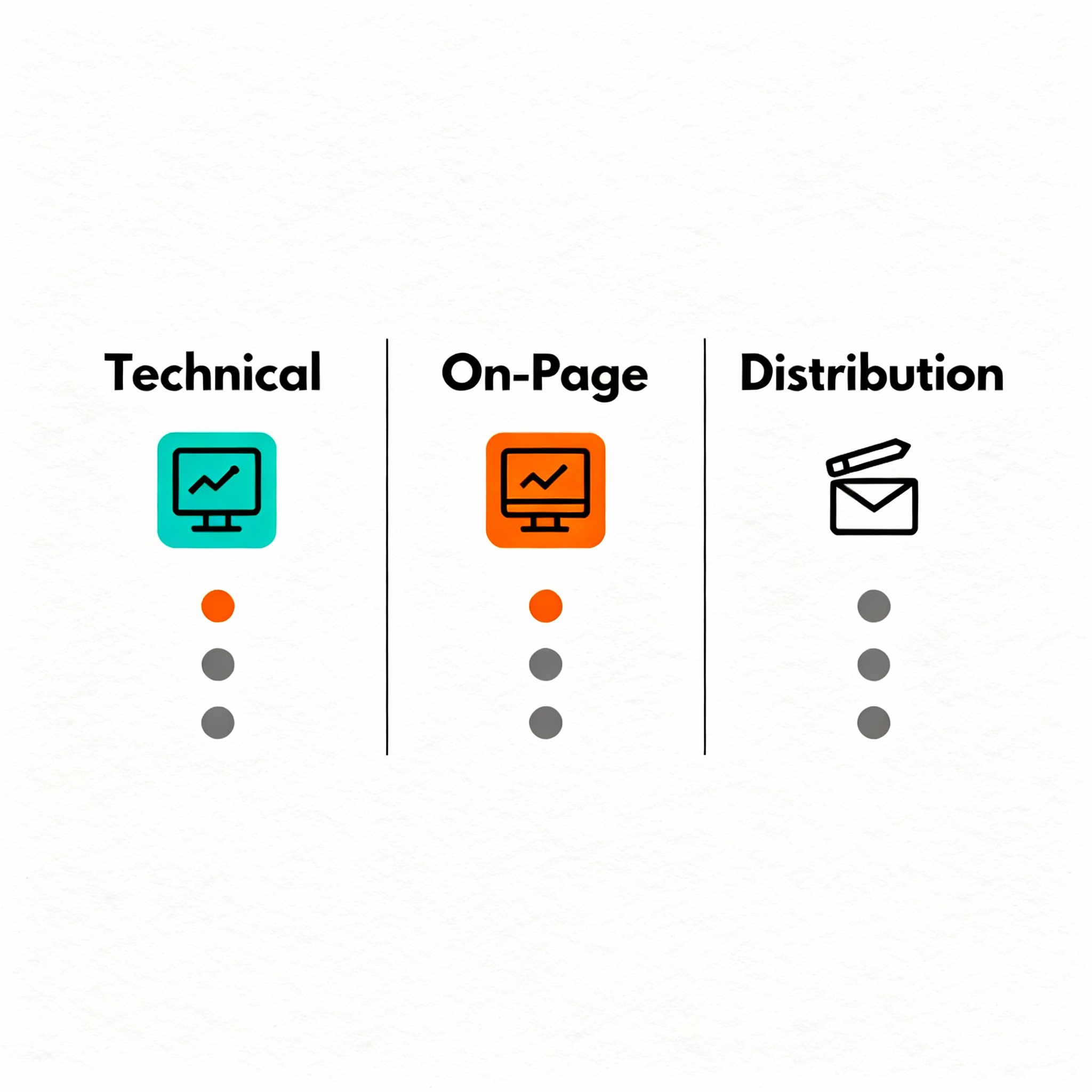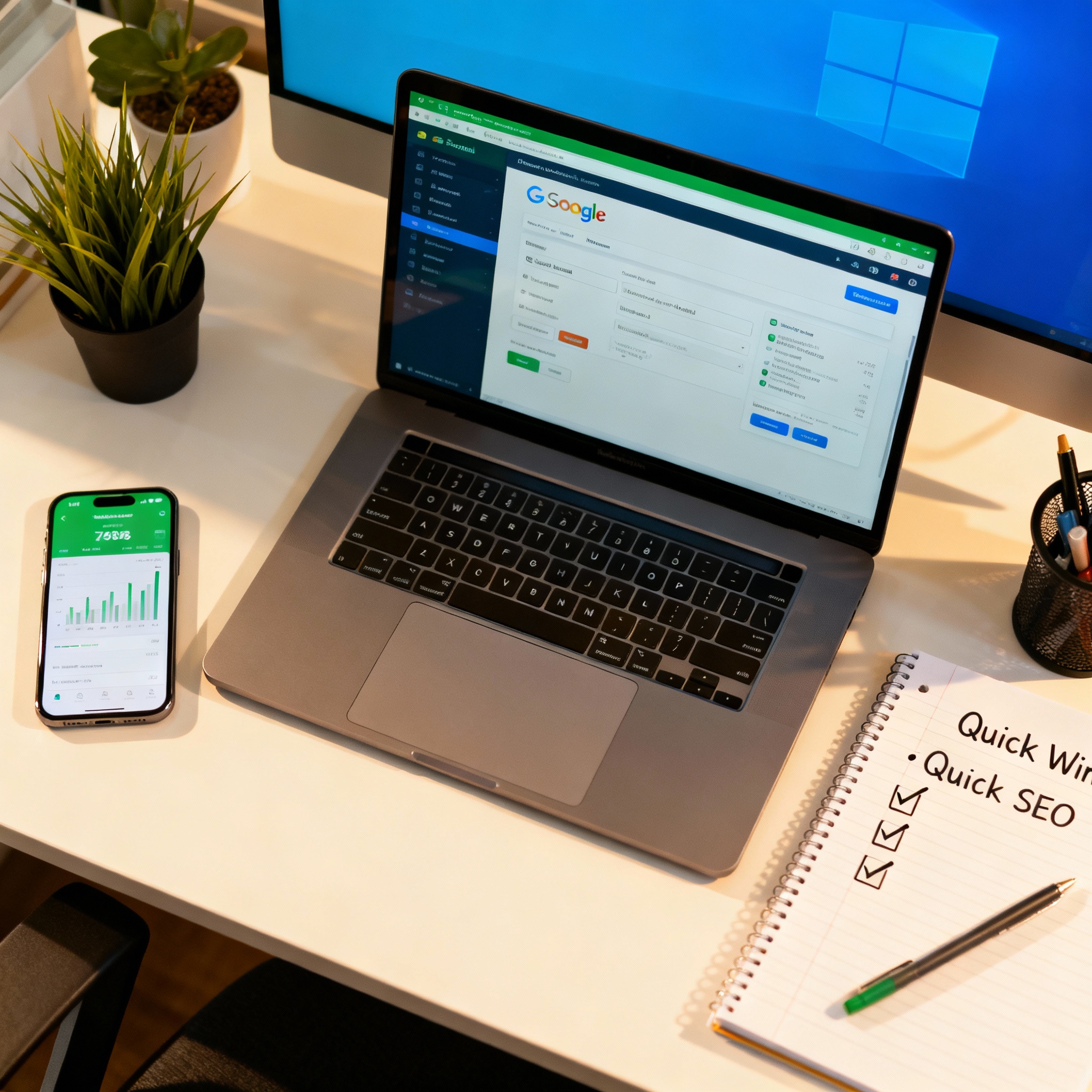Picture this: you publish a useful post, then stare at your analytics at 2 AM wondering why traffic stayed flat. You are not alone. Website owners, SEO companies, content marketers, and digital marketing agencies need fast, defensible ways to move the needle, especially during early-stage growth, like Day 19 content planning for a new business. In this article you will get pragmatic, prioritized steps to capture more clicks this week, with clear sources and action items you can implement right now. Bold move: immediate seo traffic boost methods can work when you focus on search intent, technical fixes, and higher click-through rates.

Quick overview: what moves results fast
- Low-effort, high-impact wins are where to start: fix poor CTR, repair indexing problems, and reduce load time.
- Use data first: Search Console shows which pages are close to breaking into higher positions, so prioritize those.
- Don’t overproduce content. Refresh and optimize what already ranks, then amplify smartly.
Immediate SEO Traffic Boost Methods You Can Do Today
1. Improve title tags and meta descriptions for pages that are "almost there"
Check Search Console for pages with decent impressions but low click-through rates. Rewrite title tags and meta descriptions to match search intent and add emotional triggers or benefits. Keep title length readable and meta descriptions under 155 characters so they do not get truncated. Use Search Console Insights and the Performance report to find these pages quickly. Google Search Console Insights
Action steps:
- Filter queries with high impressions and average position 6 to 20.
- Create 3 test titles and meta descriptions, deploy the best one, and monitor 7 days of change.
2. Patch indexation and coverage issues now
If pages are not indexed, they cannot drive organic clicks. Use the URL Inspection tool to confirm indexing and fix errors like robots blocks or canonical misconfigurations. The Search Console debug guide helps prioritize fixes. Debug Search Traffic Drops
Action steps:
- Run URL Inspection on underperforming pages.
- Fix robots.txt, remove noindex tags, and resubmit sitemap for affected zones.
3. Boost page speed with targeted Core Web Vitals fixes
Improving LCP and INP can reduce bounce and increase rankings for competitive queries. Quick wins include preloading key assets, serving images via next-gen formats, and using a CDN. Follow Core Web Vitals guidance for immediate tactics. Core Web Vitals
Action steps:
- Identify LCP element and add fetchpriority or preload.
- Defer noncritical JavaScript, enable image optimization.
4. Refresh and expand content around keywords that are trending
Rather than creating brand new posts, update pages that are already getting impressions. Add 300 to 500 words that answer adjacent long-tail questions, update dates, and add an FAQ block to capture featured snippets.
Action steps:
- Use Search Console to find rising queries and add sections that explicitly answer them.
- Add structured data where relevant to improve SERP features.
5. Improve internal links to boost page authority quickly
Move contextual internal links from related, higher-traffic pages to target pages you want to rank. That transfers relevance and helps crawlers discover updated pages faster.
Action steps:
- Identify 3 high-traffic pages and add 2 to 3 contextual links to your target page.
- Use natural anchor text that reflects searcher intent.
6. Optimize for higher click-through rate with rich snippets and schema
Structured data can improve how your listing looks in search. FAQ and HowTo schema are quick to add and often lift CTR. Make sure markup is valid.
Action steps:
- Add FAQ schema for pages with clear question and answer sections.
- Validate with Rich Results Test before deployment.
7. Reclaim lost traffic from brand or competitor cannibalization
Sometimes internal pages compete for the same query. Identify cannibalizing pages and consolidate or differentiate them so one page becomes the clear winner.
Action steps:
- Use Search Console to spot pages sharing top queries.
- Merge or change keyword focus on lower-performing pages.
8. Promote quickly: targeted outreach and low-cost amplification
Share updated posts with small, relevant audiences: email segments, niche communities, or industry partners. Even modest referral traffic can signal relevance and lead to backlinks.
Action steps:
- Send an announcement to a segmented email list.
- Post in two niche communities or forums where your audience already engages.
9. Use redirect hygiene to restore link equity
If you recently moved content, check for broken redirects or chains. Fixing them returns link equity and can restore lost rankings fast.
Action steps:
- Crawl your site for 3xx chains, fix to direct 301s.
- Restore any 404 pages that previously had backlinks with proper redirects.
10. Monitor hourly and iterate
With new Search Console views and the 24-hour data options, you can test changes and watch results much faster. Iterate on titles, schema, and internal links in short cycles. Search Console updates and 24-hour views
Action steps:
- Log changes and check performance with daily snapshots for the first 10 days.
- Reverse what does not improve CTR or average position.
11. Keep AI content best practices in mind
Automation is allowed when it adds value, but avoid mass-generated low-value pages. Google recommends focusing on accuracy, usefulness, and transparency when using generative AI. If you use automation, disclose and enrich content with human edits and citations. Google guidance on generative AI use
Action steps:
- Use AI to draft, but edit and fact-check every page.
- Add author context or notes explaining how automation was used when appropriate.
FAQ
Q: How fast will I see traffic improvements after making these changes?
A: Small wins like better titles and meta descriptions can increase CTR within days. Indexing, ranking lifts, and sustained traffic gains can take 1 to 6 weeks depending on competition and query volume.
Q: Can I use AI to rewrite meta tags and content?
A: Yes, but only if you validate, humanize, and add accuracy. Google permits AI use when the result is high-quality, helpful content. See Google Search Central guidance for details.
Q: Which metric should I prioritize first?
A: Start with impressions and CTR for pages ranking between positions 6 and 20. Those pages have the most leverage for quick gains.
Q: Do Core Web Vitals really impact traffic?
A: Core Web Vitals are a ranking signal and affect user behavior. Improving LCP and INP usually reduces bounce and improves engagement, which supports rankings.
Q: How many pages should I optimize each week?
A: Focus on 5 to 15 pages that already have some visibility. Bigger is not better here. Quality of updates and measurement matter more.
Automate repetitive SEO tasks and scale safely
If you want to automate content discovery, title testing, and keyword research while keeping quality control, tools exist that help you run experiments faster and track outcomes. For a platform that helps website owners and agencies automate blogging, keyword research, and content strategy based on real performance signals, try Marvlus to connect planning to results. See how it fits your workflow at https://marvlus.ai
Conclusion
Quick traction comes from focused, data-driven work: prioritize pages with impressions but low CTR, fix indexing and speed problems, and promote updates to the right audiences. Use AI to accelerate tasks, but keep human review and accuracy at the center. Do these steps consistently, measure daily, and iterate. You will see steady improvements, and those early wins compound into sustainable traffic growth.

